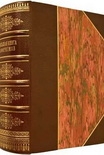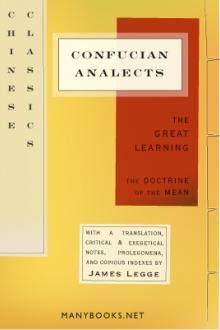Myths and Legends of China E. Werner (best reads of all time .TXT) 📖

- Author: E. Werner
Book online «Myths and Legends of China E. Werner (best reads of all time .TXT) 📖». Author E. Werner
1 She is the same as Ch’ang Ô, the name Hêng being changed to Ch’ang because it was the tabooed personal name of the Emperors Mu Tsung of the T’ang dynasty and Chên Tsung of the Sung dynasty.
Chapter VI
Myths of Thunder, Lightning, Wind, and Rain
The Ministry of Thunder and Storms
As already noted, affairs in the Otherworld are managed by official Bureaux or Ministries very similar to those on earth. The Fêng shên yen i mentions several of these, and gives full details of their constitution. The first is the Ministry of Thunder and Storms. This is composed of a large number of officials. The principal ones are Lei Tsu, the Ancestor of Thunder, Lei Kung, the Duke of Thunder, Tien Mu, the Mother of Lightning, Feng Po, the Count of Wind, and Y[’u] Shih, the Master of Rain. These correspond to the Buddhist Asuras, the “fourth class of sentient beings, the mightiest of all demons, titanic enemies of the Dêvas,” and the Vedic Maruta, storm-demons. In the temples Lei Tsu is placed in the centre with the other four to right and left. There are also sometimes represented other gods of rain, or attendants. These are Hsing T’ien Chün and T’ao T’ien Chün, both officers of Wen Chung, or Lei Tsu, Ma Yüan-shuai, Generalissimo Ma, whose exploits are referred to later, and others.
The President of the Ministry of Thunder
This divinity has three eyes, one in the middle of his forehead, from which, when open, a ray of white light proceeds to a distance of more than two feet. Mounted on a black unicorn, he traverses millions of miles in the twinkling of an eye.
Wên Chung, Minister of Thunder
His origin is ascribed to a man named Wên Chung, generally known as Wên Chung T’ai-shih, ‘the Great Page 199Teacher Wên Chung,’ He was a minister of the tyrant king Chou (1154–1122 B.C.), and fought against the armies of the Chou dynasty. Being defeated, he fled to the mountains of Yen, Yen Shan, where he met Ch’ih Ching-tzu, one of the alleged discoverers of fire, and joined battle with him; the latter, however, flashed his yin-yang mirror at the unicorn, and put it out of action. Lei Chên-tzu, one of Wu Wang’s marshals, then struck the animal with his staff, and severed it in twain.
Wên Chung escaped in the direction of the mountains of Chüeh-lung Ling, where another marshal, Yün Chung-tzu, barred his way. Yün’s hands had the power of producing lightning, and eight columns of mysterious fire suddenly came out of the earth, completely enveloping Wên Chung. They were thirty feet high and ten feet in circumference. Ninety fiery dragons came out of each and flew away up into the air. The sky was like a furnace, and the earth shook with the awful claps of thunder. In this fiery prison Wên Chung died.
When the new dynasty finally proved victorious, Chiang Tzu-ya, by order of Yüan-shih T’ien-tsun, conferred on Wên Chung the supreme direction of the Ministry of Thunder, appointing him celestial prince and plenipotentiary defender of the laws governing the distribution of clouds and rain. His full title was Celestial and Highly-honoured Head of the Nine Orbits of the Heavens, Voice of the Thunder, and Regulator of the Universe. His birthday is celebrated on the twenty-fourth day of the sixth moon.
The Duke of Thunder
The Spirit of Thunder, for whom Lei Tsu is often mistaken, is represented as an ugly, black, bat-winged Page 200demon, with clawed feet, monkey’s head, and eagle’s beak, who holds in one hand a steel chisel, and in the other a spiritual hammer, with which he beats numerous drums strung about him, thus producing the terrific noise of thunder. According to Chinese reasoning it is the sound of these drums, and not the lightning, which causes death.
A. Gruenwedel, in his Guide to the Lamaist Collection of Prince Uchtomsky, p. 161, states that the Chino-Japanese God of Thunder, Lei Kung, has the shape of the Indian divine bird Garuda. Are we to suppose, then, that the Chinese Lei Kung is of Indian origin? In modern pictures the God of Thunder is depicted with a cock’s head and claws, carrying in one hand the hammer, in the other the chisel. We learn, however, from Wang Ch’ung’s Lun Hêng that in the first century B.C., when Buddhism was not yet introduced into China, the ‘Thunderer’ was represented as a strong man, not as a bird, with one hand dragging a cluster of drums, and with the other brandishing a hammer. Thus Lei Kung existed already in China when the latter received her first knowledge of India. Yet his modern image may well owe its wings to the Indian rain-god Vajrapani, who in one form appears with Garuda wings.
Lei Kung P’u-sa, the avatar of Lei Kung (whose existence as the Spirit of Thunder is denied by at least one Chinese writer), has made various appearances on the earth. One of these is described below.
Lei Kung in the Tree
A certain Yeh Ch’ien-chao of Hsin Chou, when a youth, used to climb the mountain Chien-ch’ang Shan for the purpose of cutting firewood and collecting medicinal Page 201herbs. One day when he had taken refuge under a tree during a rain-storm there was a loud clap of thunder, and he saw a winged being, with a blue face, large mouth, and bird’s claws, caught in a cleft of the tree. This being addressed Yeh, saying: “I am Lei Kung. In splitting this tree I got caught in it; if you will free me I will reward you handsomely.” The woodcutter opened the cleft wider by driving in some stones as wedges, and liberated the prisoner. “Return to this spot to-morrow,” said the latter, “and I will reward you.” The next day the woodcutter kept the appointment, and received from





Comments (0)